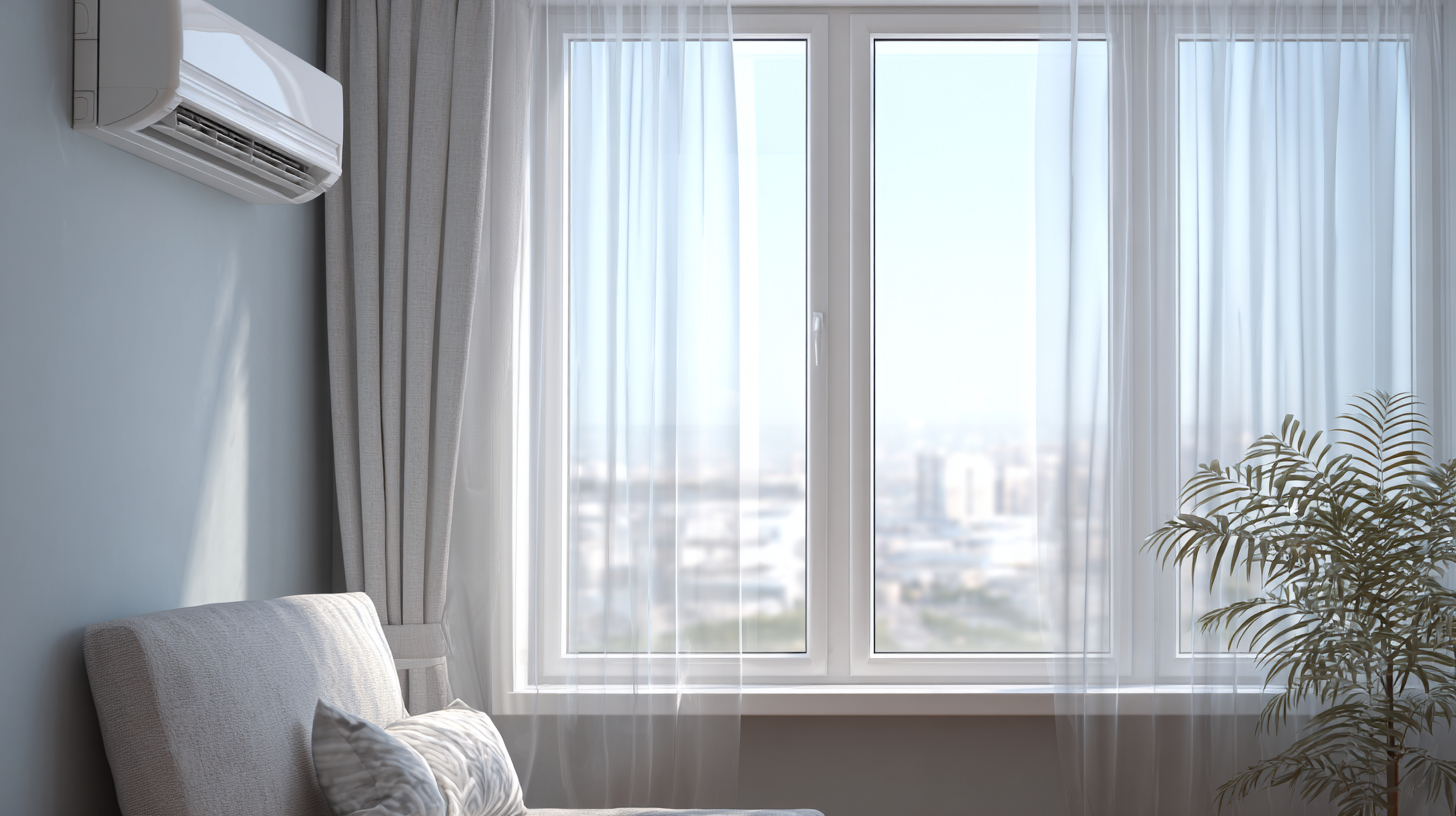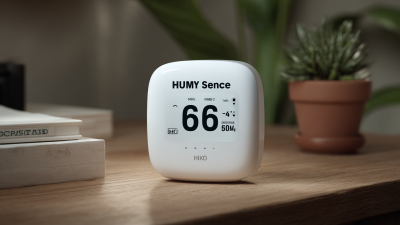
-
Home
-
Product Center
-
Application
-
Support
-
JT Cloud
-
About Us
-
Contact Us
Leave Your Message

In today's fast-paced industries, mastering the Thermal Environment within workplaces and operational settings has become increasingly vital for enhancing overall performance and productivity. According to a report by the International Journal of Environmental Research and Public Health, an optimal thermal environment can increase worker productivity by up to 25%, while poorly managed thermal conditions may lead to fatigue, decreased morale, and heightened error rates. The World Health Organization emphasizes that temperature extremes can significantly impact cognitive function, adversely affecting decision-making and problem-solving capabilities. As organizations strive for efficiency in high-stakes scenarios, understanding and implementing effective thermal environment strategies is not just beneficial; it is essential. This blog will explore how to achieve and maintain an optimal Thermal Environment, ensuring that both employees and processes operate at their peak potential.

Creating a conducive thermal environment is essential for optimal performance in workspaces. Factors like temperature control, humidity levels, and airflow directly impact productivity and employee well-being. Research indicates that thermal discomfort can lead to decreased cognitive function, making it challenging for individuals to concentrate on tasks. For instance, when indoor temperatures exceed 28°C, studies show a significant drop in productivity and decision-making capabilities, underscoring the importance of maintaining suitable working conditions.

Moreover, effective ventilation plays a crucial role in managing heat-related stress. According to recent reports, workplaces with proper air circulation can experience up to a 30% improvement in employee productivity. This improvement is particularly critical in regions experiencing extreme weather variations, such as those found in different geographic areas. For example, while northern regions often focus on heating strategies, southern areas must consider humidity control in their cooling systems. Balancing these factors through informed thermal environment strategies not only enhances performance but also fosters a healthier workplace culture.
Creating an optimal thermal environment is crucial for enhancing productivity in any workplace. One effective way to achieve this is by implementing cooling strategies that keep your workspace comfortable while ensuring equipment operates within safe temperature thresholds. A well-regulated environment not only improves worker efficiency but also prolongs the lifespan of essential technology.

Tip 1: Utilize natural ventilation whenever possible. Open windows and doors during cooler parts of the day to allow fresh air to circulate, reducing reliance on air conditioning systems. This approach not only decreases energy costs but also enhances the overall atmosphere, creating a healthier indoor environment.
Tip 2: Invest in smart thermostats and sensors. These devices can automatically adjust the temperature based on real-time occupancy and environmental conditions, ensuring optimal cooling without unnecessary energy expenditure. This technology not only maintains comfort but also aligns with sustainable practices, benefiting both the environment and your bottom line.
Tip 3: Incorporate greenery into the workplace. Plants can help naturally cool the air and improve humidity levels, creating a more pleasant and productive environment. Consider placing potted plants or green walls in strategic locations to maximize their cooling benefits.
When working with heat-generating equipment in high-temperature environments, safety must always be the top priority. These situations often pose significant risks, including equipment malfunction, fire hazards, and employee health concerns. To mitigate these risks, it’s essential to implement comprehensive safety protocols that address both operational and environmental factors. For instance, using high-quality thermal insulation materials can help to manage the equipment's heat output, while enhanced ventilation systems can ensure that hot air is effectively dissipated from the workspace.
Furthermore, training employees on the specific risks related to high-temperature operations is crucial. Workers should be knowledgeable about using personal protective equipment (PPE), recognizing signs of heat stress, and following emergency procedures in the event of equipment failure. Regular inspections and maintenance of heat-generating machinery can prevent unexpected breakdowns, ensuring smoother operations. By fostering a workplace culture that prioritizes safety and awareness, companies can optimize performance while minimizing the dangers associated with high-temperature environments.
In today's fast-paced work environment, maintaining comfort in challenging thermal conditions is crucial for optimal performance. Research indicates that productivity can drop by as much as 20% when workers are exposed to uncomfortable temperatures. According to the American Society of Heating, Refrigerating and Air-Conditioning Engineers (ASHRAE), the ideal temperature range for most office settings is between 20-24°C (68-75°F). However, with fluctuating weather patterns and increasing energy costs, organizations must adapt their work practices to ensure employee well-being and enhance overall performance.
One effective strategy is to implement adjustable workstations that allow individuals to tailor their immediate thermal environment. A study published in the Journal of Environmental Psychology found that personalized thermal comfort can lead to a 25% increase in employee satisfaction and a subsequent boost in productivity. Additionally, incorporating breaks and flexible scheduling can alleviate the burden of extreme temperatures, allowing employees to recharge in more favorable conditions. By proactively addressing thermal comfort, companies can create a supportive work atmosphere that fosters both health and efficiency.
| Strategy | Description | Optimal Usage Conditions | Performance Impact |
|---|---|---|---|
| Cooling Vests | Wearable cooling technology to regulate body temperature. | High-temperature environments, outdoor tasks in summer. | Increase productivity by 15% in extreme heat. |
| Hydration Stations | Designated areas to encourage regular water intake. | All work environments, especially in hot climates. | Reduces heat stress, maintaining focus and alertness. |
| Regular Breaks | Scheduled breaks to recover from thermal strain. | Working in both hot and cold environments. | Improves overall morale and reduces fatigue-related errors. |
| Thermal Zones | Creation of areas with controlled temperatures. | Any environment requiring temperature management. | Can enhance concentration and reduce discomfort. |
| Wearable Technology | Devices that monitor body temperature and humidity levels. | High-risk thermal environments. | Provides data to adjust workload and prevent heat-related illnesses. |
In today’s high-stakes environment, ensuring optimal performance through effective thermal management is crucial. Leveraging technology for real-time thermal monitoring and control not only enhances operational efficiency but significantly reduces risks associated with overheating and equipment failure. According to a recent report by the International Journal of Thermal Sciences, efficient thermal management can improve system performance by up to 25%, thereby minimizing downtime and extending the lifespan of critical assets.
Implementing advanced technologies such as IoT sensors and AI-driven analytics allows organizations to continuously monitor thermal conditions. These technologies provide invaluable insights, facilitating proactive adjustments that can lead to significant energy savings. A study published by the American Society of Heating, Refrigerating and Air-Conditioning Engineers (ASHRAE) revealed that comprehensive thermal control systems could reduce energy expenditure by as much as 30%, translating into considerable cost savings. By adopting these modern solutions, businesses can achieve a high level of precision in managing their thermal environments, ensuring both reliability and efficiency in their operations.





